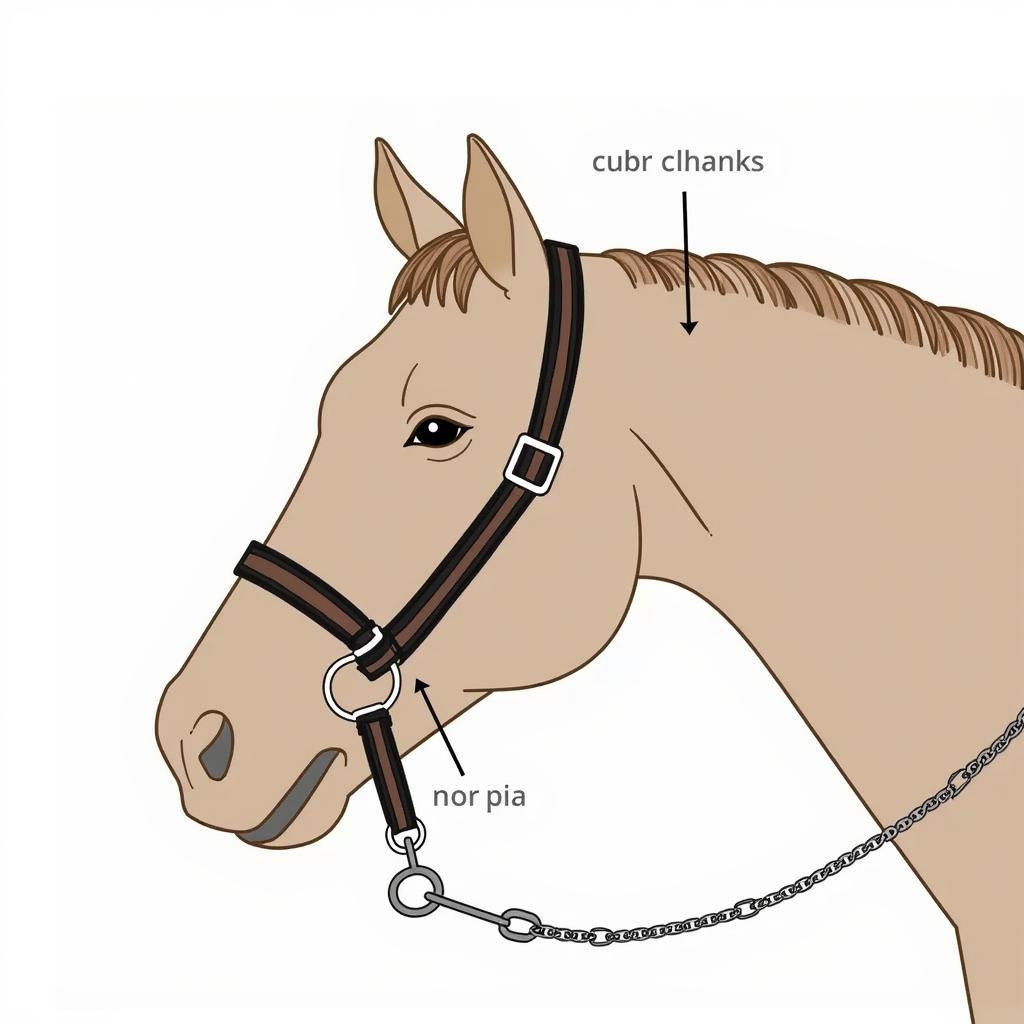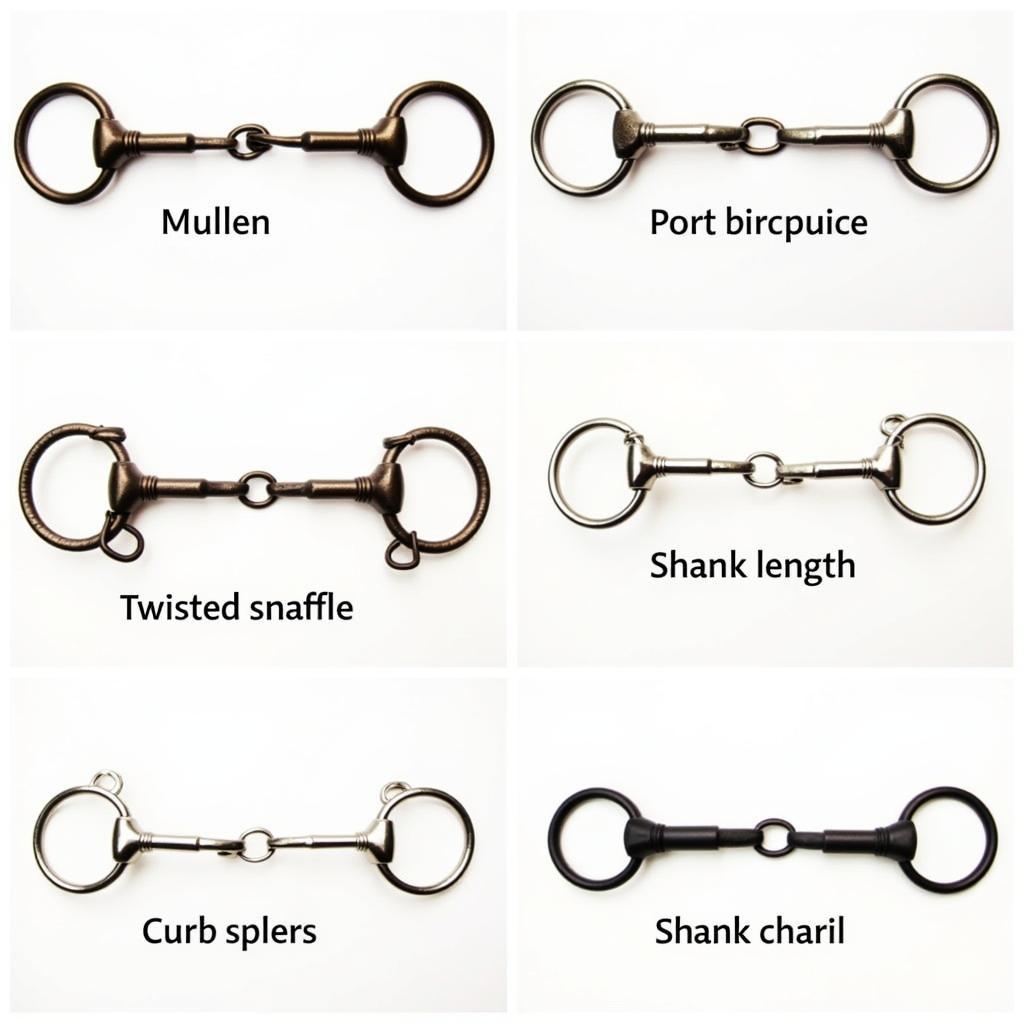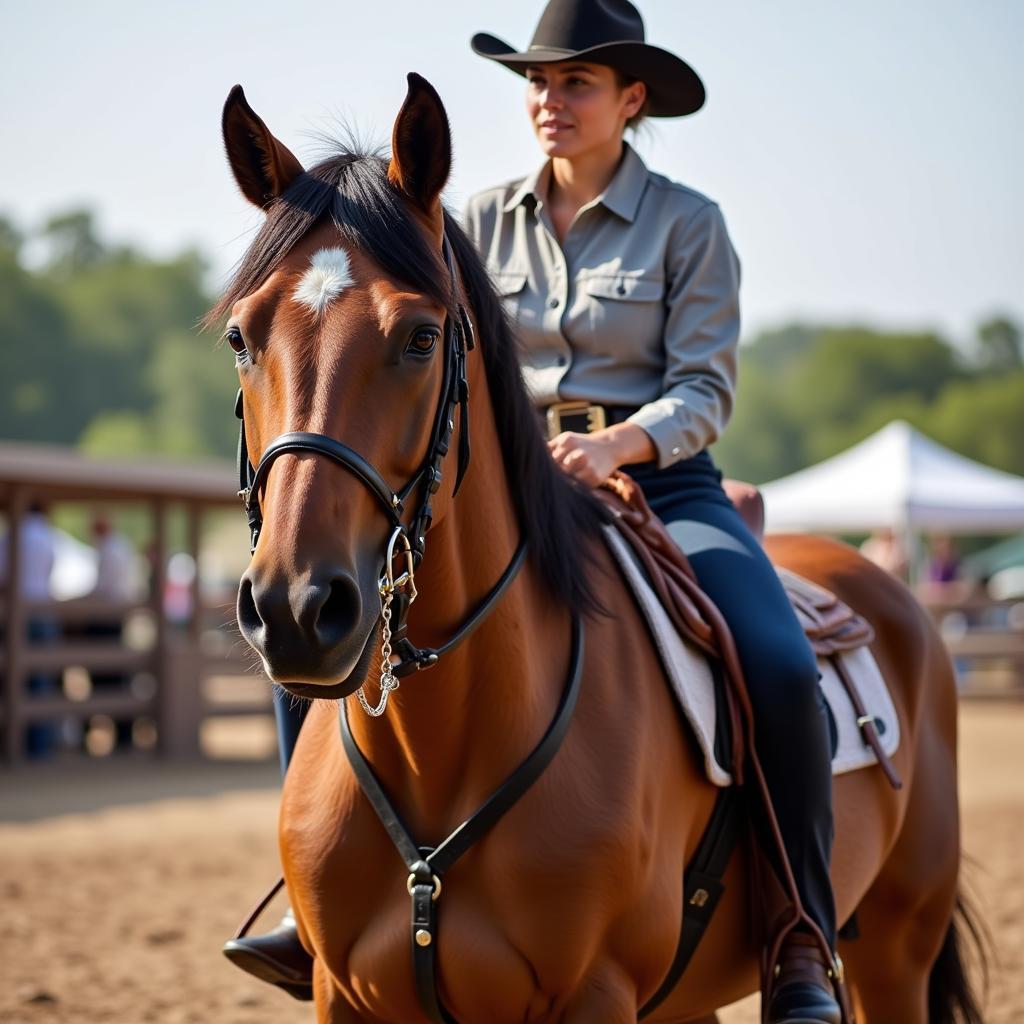The curb bit, a significant piece of equipment in the equestrian world, is a type of horse bit that utilizes leverage for communication between rider and horse. Unlike a snaffle bit, which operates on direct pressure, the curb bit employs shanks and a curb chain to apply pressure to the poll, chin groove, and bars of the mouth. Choosing the right bit for your horse is crucial, and understanding the mechanics and uses of a curb bit is paramount for any horse owner.
How Curb Bits Work
 Anatomy of a Curb Bit
Anatomy of a Curb Bit
The curb bit’s leverage system amplifies the pressure applied by the rider’s hands. When the reins are engaged, the shanks rotate backward, tightening the curb chain under the horse’s jaw. This action creates pressure points on the poll, bars of the mouth, and chin groove, encouraging the horse to flex at the poll and bring their nose inward.
Several factors influence the severity of a curb bit, including:
- Shank length: Longer shanks generate more leverage, resulting in increased pressure.
- Port height: A higher port provides tongue relief but can also exert greater pressure on the roof of the mouth.
- Curb chain tightness: A looser curb chain delays engagement and reduces pressure, while a tighter chain creates a more immediate and intense response.
Types of Curb Bits
 Various Curb Bit Designs
Various Curb Bit Designs
Curb bits come in a wide array of designs, each with its unique effects on the horse. Some common types include:
- Tom Thumb: A basic curb bit with a slight port and short shanks, often used for starting young horses.
- Argentine Snaffle: Featuring a broken mouthpiece and medium-length shanks, this bit offers more control than a traditional snaffle but with less leverage than other curb bits.
- Grazer: This bit has a longer lower shank and a shorter upper shank, allowing the horse to graze comfortably while still providing control.
- Correction Bit: Characterized by longer shanks and a higher port, this bit is typically used for experienced horses requiring significant control or for correcting behavioral issues.
When to Use a Curb Bit
 Horse and Rider Using a Curb Bit Effectively
Horse and Rider Using a Curb Bit Effectively
Curb bits are not suitable for all horses or riding disciplines. They are generally used for:
- Western riding: Many Western disciplines, such as reining and cutting, favor curb bits for their precision and control.
- Horses with thicker mouths: The leverage of a curb bit can be helpful for horses who are less sensitive to pressure on the bars of the mouth.
- Experienced riders: Handling a curb bit requires finesse and experience. It’s essential to understand how to use the bit effectively and avoid causing pain or discomfort to the horse.
Choosing the Right Curb Bit for Your Horse
Selecting the appropriate curb bit is a critical decision that should involve the guidance of a knowledgeable trainer or equine professional. Factors to consider include:
- Horse’s age, breed, and temperament
- Riding discipline and level of training
- Horse’s mouth conformation and sensitivity
- Rider’s experience and skill level
Remember that a curb bit is a tool, and its effectiveness depends on proper use. It should never be used to punish or force a horse into submission. If you’re unsure about using a curb bit, it’s always best to err on the side of caution and consult with a professional.
FAQs about Curb Bits
Q: Are curb bits cruel?
A: No, curb bits are not inherently cruel. However, like any bit, they can be used incorrectly and cause pain. It’s crucial to use the appropriate size and type of curb bit for your horse and to handle it with skill and sensitivity.
Q: Can I use a curb bit on a young horse?
A: It’s not recommended to use a curb bit on a very young horse. Starting with a snaffle bit allows the horse to develop proper mouth and responsiveness to pressure before introducing the leverage of a curb bit.
Q: What is the purpose of the curb chain?
A: The curb chain plays a vital role in the function of a curb bit. It applies pressure to the chin groove when the reins are engaged, creating leverage and encouraging the horse to flex at the poll.
For further reading on horse equipment, you can explore our articles on horse bit mouthpieces, barrel bits for horses, and cheek pieces on horses. We also have resources available on leather bit horse and dressage horse bits to further expand your knowledge.
Need More Help with Your Horse?
Choosing the right equipment for your equine partner can be a daunting task. If you have any questions about curb bits or need guidance on selecting the best option for your horse, our team at Justus Horses USA is here to help.
Contact us at:
Phone: 0772127271
Email: [email protected]
Address: QGM2+WX2, Vị Trung, Vị Thuỷ, Hậu Giang, Việt Nam
We are available 24/7 to assist you with all your horse care needs.